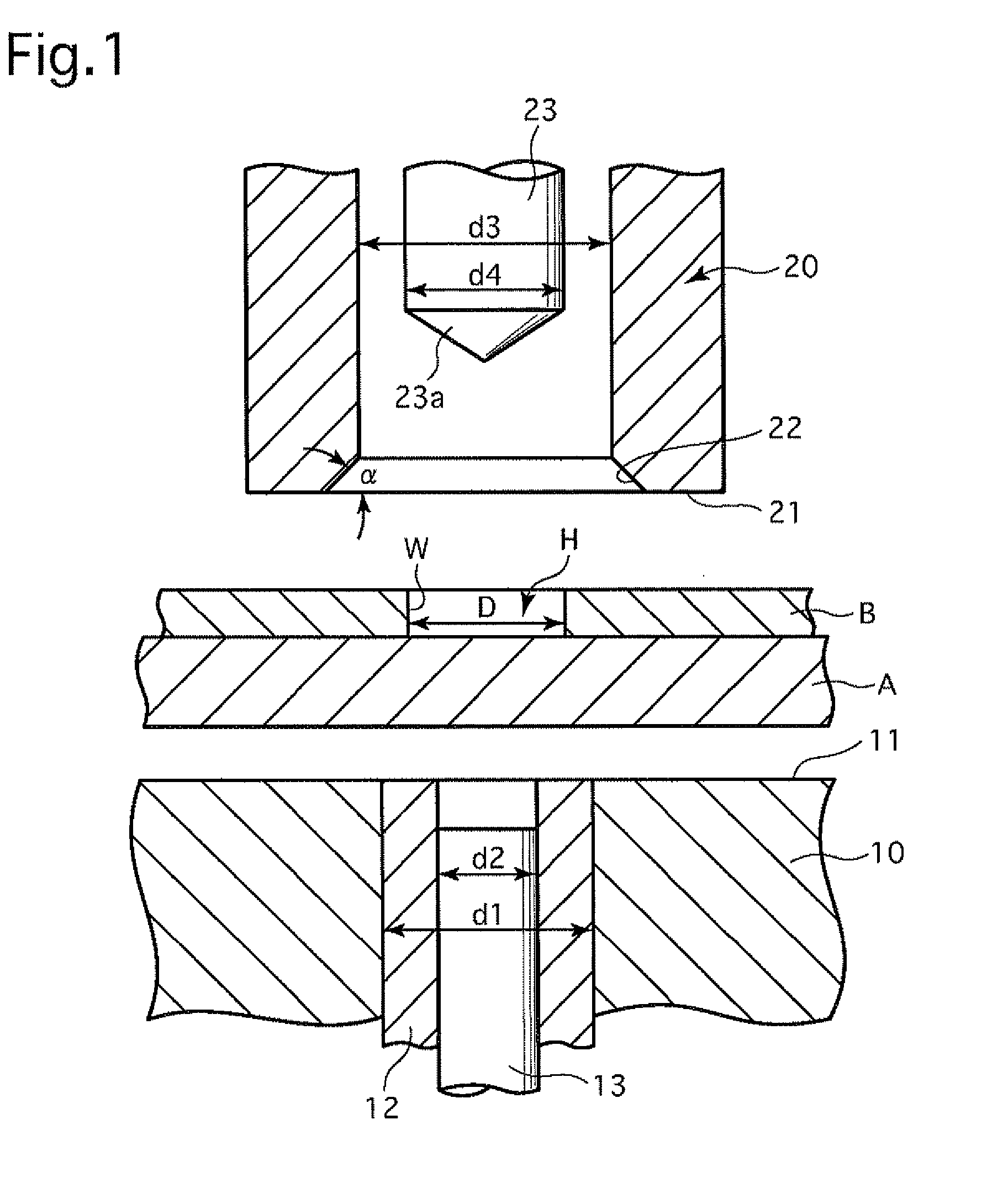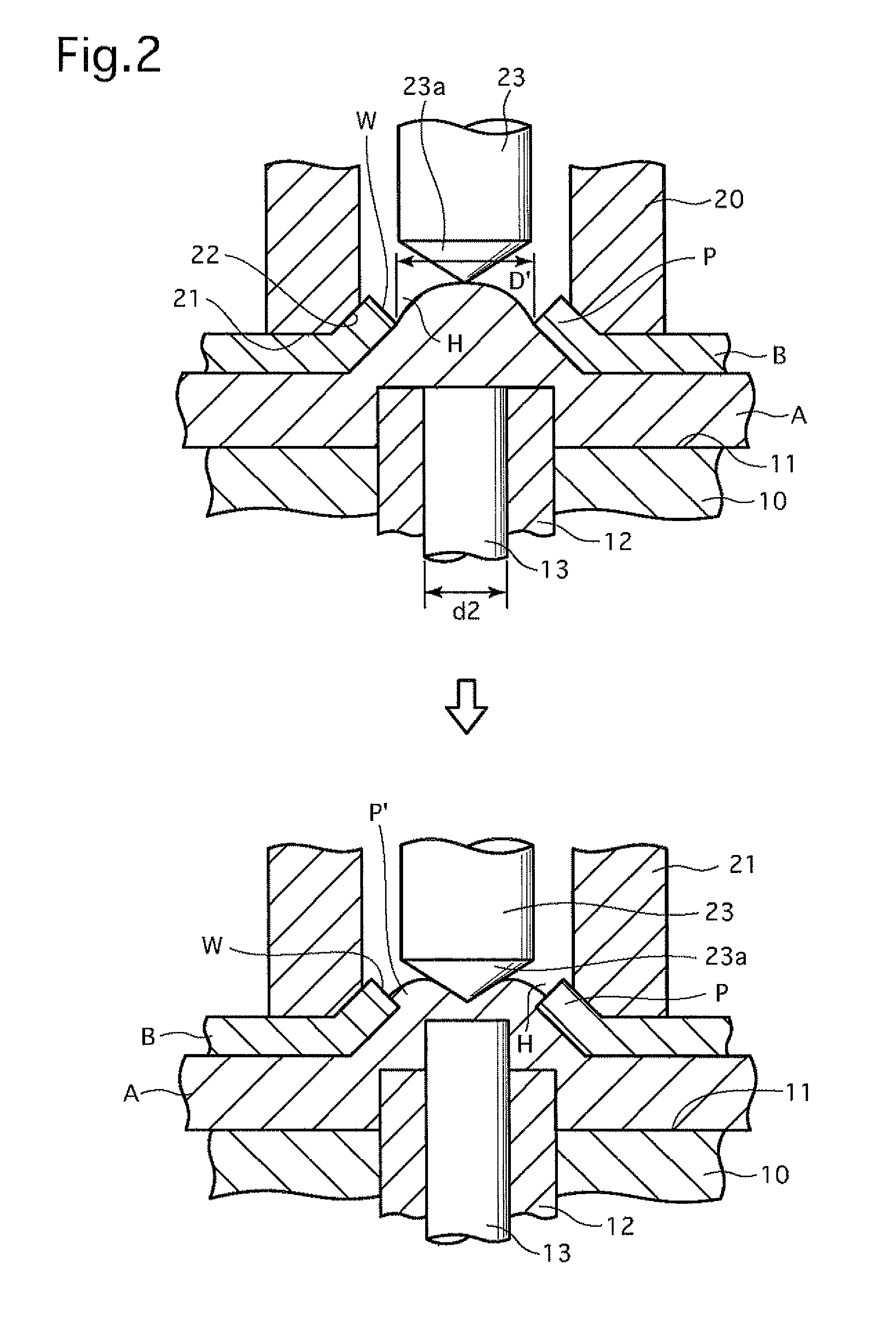Method, device and structure for joining two members together
a technology of two members and a structure, applied in the field of methods, devices and structures for joining two members together, can solve the problem of insufficient strength and achieve the effect of sufficient peel strength
- Summary
- Abstract
- Description
- Claims
- Application Information
AI Technical Summary
Benefits of technology
Problems solved by technology
Method used
Image
Examples
Embodiment Construction
[0026]FIG. 1 shows an embodiment of a joining device that operates to implement a method of joining two members together. The joining device is used to join a non-through-holed member (unholed member / plate / board) A that does not include a through-hole and a through-holed member (holed member / plate / board) B that includes a through-hole H having an inner diameter D. The joining device is provided with a swaging base 10 and a die 20 which are movable relative to each other in directions toward and away from each other. All the elements of the joining device are rotationally symmetrical with respect to an axis (central axis of the through-hole H).
[0027]The swaging base 10 is provided with a flat mounting surface 11 on which the non-through-holed member A is mounted. The swaging base 10 is further provided with a first base swaging punch 12 and a second base swaging punch 13 each of which advances and retreats (moves upward and downward with respect to FIG. 1) from the flat mounting surf...
PUM
| Property | Measurement | Unit |
|---|---|---|
| shape | aaaaa | aaaaa |
| diameter | aaaaa | aaaaa |
| peel strength | aaaaa | aaaaa |
Abstract
Description
Claims
Application Information
 Login to View More
Login to View More - R&D
- Intellectual Property
- Life Sciences
- Materials
- Tech Scout
- Unparalleled Data Quality
- Higher Quality Content
- 60% Fewer Hallucinations
Browse by: Latest US Patents, China's latest patents, Technical Efficacy Thesaurus, Application Domain, Technology Topic, Popular Technical Reports.
© 2025 PatSnap. All rights reserved.Legal|Privacy policy|Modern Slavery Act Transparency Statement|Sitemap|About US| Contact US: help@patsnap.com



